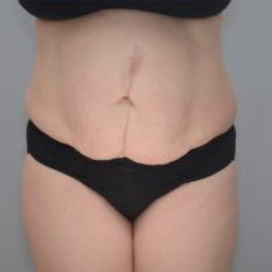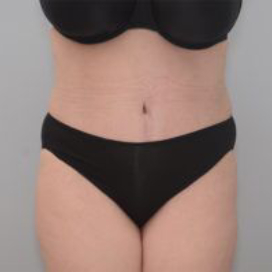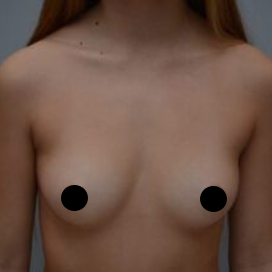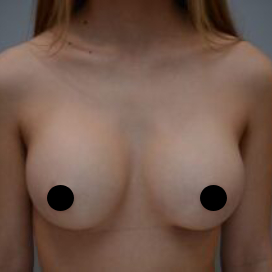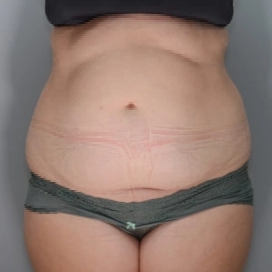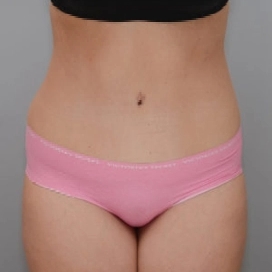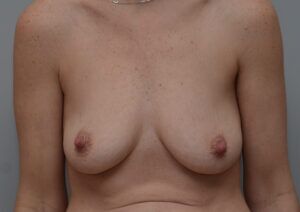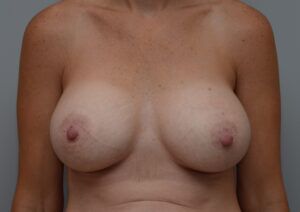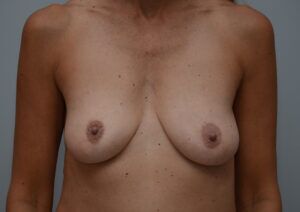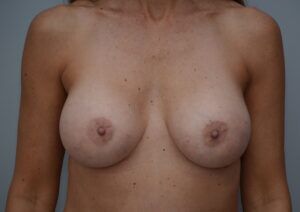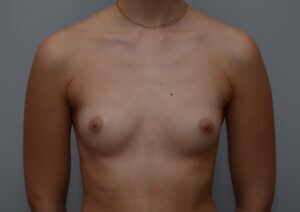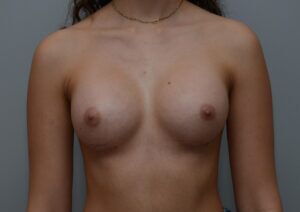Breast Augmentation
Conveniently located to serve the areas of Boston, MA
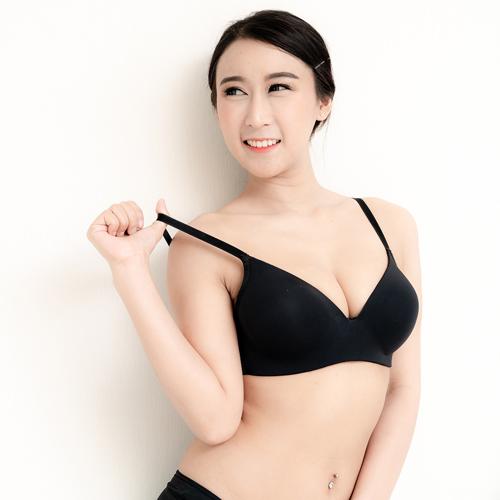
Breast augmentation is a cosmetic procedure to add more volume and an elevated shape to the breasts. One of the most effective ways to perform breast augmentation is with implants, adding the exact contours and symmetry the patient desires. For many women who undergo the procedure, the results can offer them a reliable means of feeling happier and more comfortable in their appearance.
With the wide variety of implant types available, surgeons can create highly personalized, natural-looking results that can last for over a decade. Since the inception of breast implants in the 1960s, surgeons have continually refined their techniques to promote consistent and safe outcomes that encourage a speedy recovery. As of 2020, the American Society of Plastic Surgeons reported that breast augmentation remains in the top 5 most highly requested procedures in the United States. (1)
At JL Plastic Surgery in Boston, the staff is committed to delivering high-quality service and surgical education, empowering patients to make informed decisions for themselves. If you feel that breast augmentation may be right for you, consider talking about your cosmetic concerns with renowned plastic surgeon, Dr. Jeffrey Lee. Dr. Lee’s involvement in research and presentations in his fields of study have made him a highly trusted and respected surgeon in the region and an expert in breast surgery.
To get started with a consultation, we invite you to call our Boston office at (617) 340-2822 or fill out our contact form, and a staff member will assist you with finding an appointment that aligns with your schedule.
Before and After Photos
Types of Breast Implants
Finding the right type of implant for your body structure and shape is essential to having them conform seamlessly to your chest in the most natural way possible. Dr. Lee will discuss the details of the differences between each implant type, but in general, they are categorized by material, shape, and texture.
Silicone and Saline Implants
Silicone gel implants tend to have a dense, jelly-like texture since these are filled with only silicone. Some of the most advanced, durable silicone implants are “gummy bear” implants- filled with an extra cohesive gel that helps prevent breast deformity and sagging, making them one of the most sought-after implants. (2) Saline implants, on the other hand, have been included in breast surgery for much longer than silicone-only options. These are filled with a harmless saltwater solution, giving it a more liquid feel and texture. In the extremely rare cases where these can rupture, the body can easily absorb the saline. For the insertion of saline implants, Dr. Lee can utilize small incisions to insert the shell and fill it with saline once it is already within the breast pocket, helping the breast acclimate.
Round and Teardrop Implants
For the most part, round implants are more popularly used to perform cosmetic breast augmentation since they can offer more upper pole volume, enhancing breast cleavage. Teardrop implants have more volume on the bottom and less at the top. Though they can imitate one of the most common natural breast shapes, surgeons often reserve these for breast reconstructions after cancer treatment. They can be more advantageous for those with little tissue after a mastectomy flap surgery. (3)
Smooth and Textured Implants
All implants have either a smooth or “textured” surface that adapts differently to the subcutaneous breast tissue. Smooth implants can facilitate a natural look with a reduced likelihood of skin rippling, but textured implants can more securely adhere to the breast. There are various other pros and cons to each, but one type may work better than the other due to unique body characteristics and aesthetic goals.
Breast Implant Profile
An implant’s profile refers to how much it projects from the chest wall, not necessarily how much volume it has in total. If you are slimmer and have a smaller frame, you may benefit from a low-profile type of implant that blends better with your contours. If you have a larger frame, Dr. Lee may recommend a higher profile implant to better match your body structure.
Personal Consultation
Because everyone has different goals, it is vital that you discuss them with Dr. Lee so that he can make the best recommendations on how to achieve them. He will accurately assess your breast tissues and find the appropriate implants to help you find the incredible outcome you are searching for. During this appointment, he will review your medical history, tailor personalized preparation instructions, and explain the healing process after your surgery. He will detail his plan for the surgical techniques he wishes to employ, helping you fully understand every aspect of the procedure. The consultation is simply the first step; Dr. Lee will continue to cater exceptional care throughout your recovery with scheduled follow-up appointments.
To find out more about breast implants and if you are an ideal candidate, visit JL Plastic Surgery in Boston, fill out an inquiry using our contact form, or call a member of Dr. Lee’s team at (617) 340-2822.
Procedure Details
Dr. Lee can safely perform the procedure with either sedation or general anesthesia. After this, he will utilize one of the following incision techniques to create an opening to form the breast pocket and place the implants:
- Inframammary: An incision that follows the underside of the breast
- Periareolar: An incision that encircles the areola
Implant Placement
The incision technique will mostly depend on the amount of breast tissue already present and the size and type of implant. Dr. Lee will then decide which plane of tissue to place the implants in:
- Subglandular placement. The implants will lie on top of the pectoralis (chest muscle).
- Subpectoral placement. He will place the implants under the pectoralis muscle.
- Dual-plane placement. A subtype of subpectoral placement, the implant will partially lie under the gland, but most of it will be under the muscle.
Many surgeons favor the subpectoral or dual plane approach since it can promote a smoother appearance, reduce the likelihood of skin-rippling deformities, and may point to reduced rates of capsular contracture. With capsular contracture, too much scar tissue develops around the implant, sometimes deforming the shape of the breast itself. (4) Surgeons often recommend a sub-glandular approach for women with enough upper pole fullness or those where the pectoralis muscles are very strong. This placement often helps reduce rates of implant displacement and movement. (5) A dual-plane approach can offer a more teardrop-like aesthetic appearance, provide greater support than sub-glandular placement, and offer greater surgical customization.
The Keller Funnel Technique
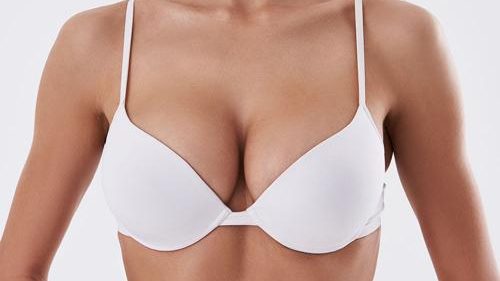
Dr. Lee uses the Keller Funnel “no touch” technique and other best practices to minimize the risk of developing long-term medical issues. The Keller Funnel is a tool that helps to insert silicone implants through a smaller incision than what is normally required. With this tool, there is also no need for the surgeon to touch the implant. A key advantage of the “no touch” technique is that it helps minimize the risk of transferring bacteria to the implants. Recent research highlights the role of bacteria in both short-term as well as long-term complications such as capsular contracture. (6) By minimizing the chance of introducing bacteria on the implant, you will have a reduced risk of having such complications.
After inserting each implant, Dr. Lee will close the incisions using a multiple layer suturing method and apply a surgical dressing. The entire procedure typically takes about 1 to 1.5 hours, depending on complexity.
Recovery and Results
You will likely require 4 days of downtime in which you will require prescription medication and time away from work. After that, you can switch to over-the-counter medications that Dr. Lee approves of. He will provide you with a supportive post-surgical bra without padding or underwires, but you will be able to switch to a compression sports bra if you find it more comfortable. You should be mindful of avoiding any bra with underwires since they can irritate the incisions, while padding can push the implants out of their appropriate position in the breast pocket. The goal is to mitigate swelling and protect your incisions as you heal. You should be able to resume lower body exercises about 3 weeks into your recovery, but you will have to wait at least 6 weeks before resuming any strenuous activities for the upper body.
Cost of Breast Augmentation in Boston
The cost of your breast augmentation will depend on the surgical techniques, anesthesia fees, patient anatomy, length of time, implant type, and various other factors. You can visit our pricing guide for rough estimates of our procedures at JL Plastic Surgery. If you are interested in avoiding out-of-pocket payments, ask about our financing options with CareCredit and PatientFi.
To find out more about breast augmentation at JL Plastic Surgery, contact us today or call (617) 340-2822, and we will arrange your consultation at our office in Boston. Dr. Lee will be happy to discuss your implant options and help you achieve the breasts you’ve been hoping for.
References
- American Society of Plastic Surgeons. 2020 Plastic Surgery Statistics Report. 2020. https://www.plasticsurgery.org/documents/News/Statistics/2020/plastic-surgery-statistics-report-2020.pdf
- Shridharani SM, Bellamy JL, Mofid MM, Singh NK. Breast Augmentation. Eplasty. 2013;13:ic46. https://www.ncbi.nlm.nih.gov/pmc/articles/PMC3685325/
- Khavanin N, Clemens MW, Pusic AL, et al. Shaped versus Round Implants in Breast Reconstruction. Plastic and Reconstructive Surgery. 2017;139(5):1063-1070. doi:https://doi.org/10.1097/prs.0000000000003238
- Swanson E. Dual Plane versus Subpectoral Breast Augmentation. Plastic and Reconstructive Surgery – Global Open. 2016;4(12):e1173. doi:https://doi.org/10.1097/gox.0000000000001173
- Zucal I, Mathias Tremp, Duscher D, et al. Augmentation-Mastopexy: Analysis of 95 Consecutive Patients and Critical Appraisal of the Procedure. Journal of clinical medicine. 2023;12(9):3213-3213. doi:https://doi.org/10.3390/jcm12093213
- Ajdic D, Zoghbi Y, Gerth D, Panthaki ZJ, Thaller S. The Relationship of Bacterial Biofilms and Capsular Contracture in Breast Implants. Aesthetic Surgery Journal. 2016;36(3):297-309. doi:https://doi.org/10.1093/asj/sjv177
